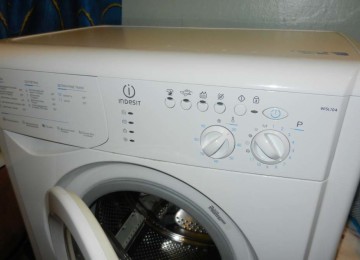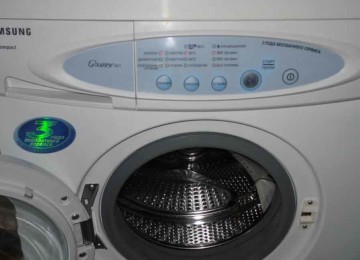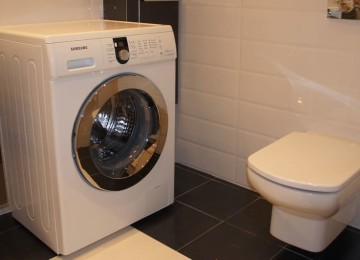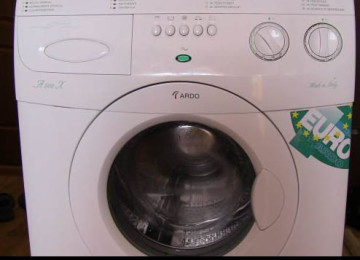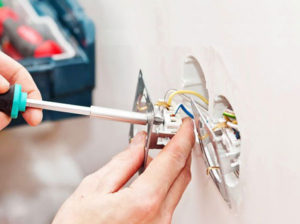 It’s not enough to just buy a washing machine whose quality characteristics turned out to be suitable. It is important to organize proper grounding, only in this case the device will work as it should. This job is easy to do yourself if you follow simple instructions. This article will tell you how to ground a washing machine if there is no grounding.
It’s not enough to just buy a washing machine whose quality characteristics turned out to be suitable. It is important to organize proper grounding, only in this case the device will work as it should. This job is easy to do yourself if you follow simple instructions. This article will tell you how to ground a washing machine if there is no grounding.
Missing ground wire: what is the danger?
When a washing machine appears in the house, you need to take care of its safety. If the connection is incorrect, there is a risk of electric shock. This causes sensitive electronics to fail prematurely. Repair and replacement are then carried out with some difficulties and require additional costs.
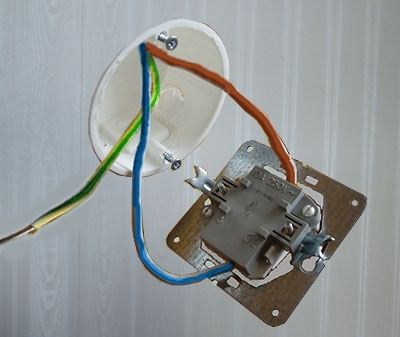
Most of the electronics models produced are designed for operation in conjunction with a three-wire network consisting of several components:
- Neutral conductor.
- Phase conductor.
- Grounding conductor.
If there is such a filter and two-wire wiring is used, a 110-volt residual voltage will form on the surface of the housing. Due to the constant high level of humidity, the likelihood of electric shock only increases, which is also always worth remembering.
How to create a safe environment in your apartment?
The time of construction of the building is the main factor on which the connection scheme used in the future depends. If we are talking about a new building, then there should be no serious difficulties due to security and connections. After all, builders usually organize appropriate grounding in such cases from the very beginning. Wiring for electricity will most likely have a third wire that is grounded.
Such measures are quite enough to avoid injuries from electric shocks.
In the first option, it is assumed that the shield becomes the grounding source. This resource comes to it from outside sources. And from it electricity goes directly to the apartment.
The work is carried out in the following stages:
- Owners place two tires inside the shield.One of them should be zero, and the other should be grounding, with the appropriate designation. It is from these elements that the wires are then laid out, separately for household appliances, and separately for lighting.
- A three-core wire is laid from the outlet that powers the washing machine. The main thing is that the copper section is present. The following nuances are taken into account when connecting.
The neutral or blue wire must connect to the neutral bus. The phase or red wire goes through the RCD circuit breaker, and then connects to the same phase meter. Finally, the yellow-green wire goes to the ground bus. Grounding elements must not be connected to wires for working with zero.
To perform each step correctly, you will need several types of tools:
- Sharp knife.
- Grounded socket.
- Three-core wire.
- Indicator screwdriver.
- Pliers.
The main thing is to be responsible and attentive to your work. If the actions seem too complicated, then it is better to contact specialists.
The first grounding method is the most reliable. It does not violate legal requirements.
What other solutions are available?
In old houses it often happens that there is no grounding at all. That is, the ground wire inside the panel is not connected. Standard grounding cannot be arranged for those who live on the fifth floor.
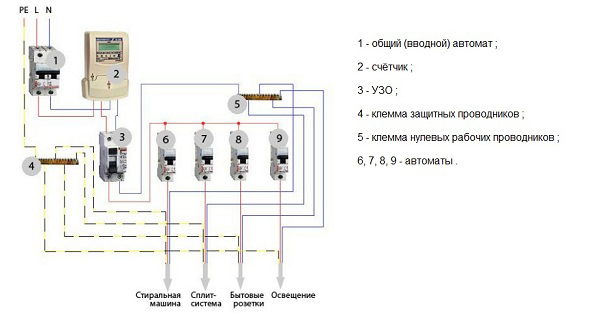
Installation inside the bathroom leads to the human body receiving the current.This occurs when two objects capable of transmitting electricity come into contact with each other at the same time.
Creating a potential equalization system eliminates problems. It promotes the appearance of metal wires to connect objects through which electricity is conducted. Then electricity will not pass through a person when he simultaneously touches the faucet and the washing machine, for example.
The system assumes the presence of an addition, which is the so-called RCD machine. The same applies to the machine gun in the dashboard. In this case, the washing machine simply turns off automatically if a malfunction occurs. An important point is to use a waterproof outlet. In its absence, it is recommended to completely abandon the idea of installing the device inside the bathroom.
When installing an electrical wiring, you need to use only solid types of wires. When organizing docking, this is done in a special box, after careful insulation for all components.
There is also a simpler option for arranging grounding. Under such circumstances, a grounding wire with a source in the form of a machine body is fixed to a battery or a sewer pipe. But at present the solution is not safe and legal. There is a good chance that even your neighbors will feel the current when they touch the riser. The surface of the pipes suffers from the formation of cracks, which ultimately leads to flooding.
About grounding for private houses
In many ways, the work is carried out using the same methods as in the apartment. It is assumed that standard electrical panels will be used. The grounding itself is carried out independently by a home craftsman.
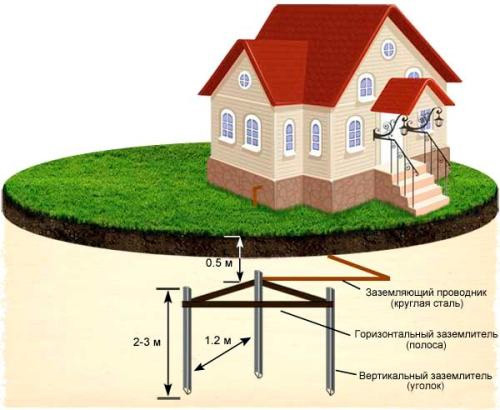
The process is worth describing in detail:
- First we need three metal pipes with diameters of 1.5-3 meters. Their length should be the same as the depth of soil freezing, but no less.
- We sharpen the lower part of the structures. A sledgehammer is used for this. Next, in the same lower part we create holes with a diameter of 5-10 millimeters.
- Then we dig a hole in the ground, with a depth of 0.5-0.6 millimeters.
- The pipes need to be driven into the ground. They should be at a distance of 1-1.5 meters from each other. Above the ground you need to leave about 10-15 centimeters free.
- We take three plates or pieces of reinforcement on a metal base. The length should be approximately 1-1.5 meters. The parts protruding from the ground are connected using welding technology.
- The fittings are welded to the ground wire. It is brought inside the house to the place where it is planned to install the meter in the future.
- We connect the grounding wire and bus. From the bus there are other wires leading to sockets with lighting.
What mistakes are made when doing work?
The main thing is to correctly understand which route the current moves, starting from the transformer substation and ending with the consumer. You should also remember how the path works in the opposite direction. It is necessary to take into account important nuances such as the ways in which protective PE zeros and working N zeros are formed.
Separation of PEN conductors
The principle of creating protective as well as working conductors can be performed using different methods:
- On low-voltage equipment. A 0.4 kW supply substation is used, as well as a TN-S system.
- On the ground loop of a multi-story building. It is assumed that it will be converted using the TN-C-S scheme.
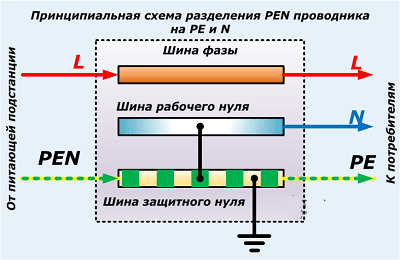
Schematic diagram of separation-PEN-conductor-on-PE-N
The first method assumes that there are five cores in the cable coming from the TP. These are two conductors, grounding and neutral, as well as three phases. In the second case, there are as many as four conductors, since the PEN system comes in unsplit form.
Zeroing of household appliances and existing dangers
If the scheme given above is used, the working and protective conductors are combined on the main shield. This is the designation of the main bus when grounded. Given such a scheme, users often make mistakes when connecting household appliances.
The opportunity to save on laying one core appears if the following conditions are met:
- The owner of a house or apartment does not pull a PE conductor from the input cord.
- The protective contact of the socket is combined with the working zero.
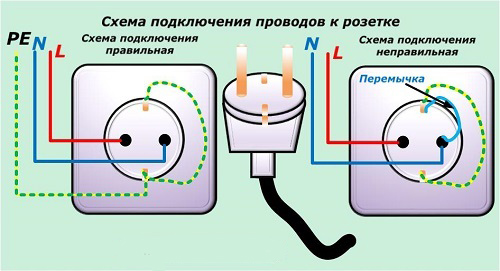
Diagram of connecting electrical wires to a socket
Zero potential is initially present in the system. Therefore, a short circuit immediately appears, which is turned off thanks to an automatic device. This principle was used when craftsmen had only old instruments at their disposal, the body of which lacked insulation.
Now the zeroing method is considered erroneous, and there are reasons for this:
- Wires and cables are disconnected when the apartment is being renovated or electrical circuits are being checked. In practice, the ends of phase and zero are quite often confused with each other. After this, the devices retain almost the same functionality, but the phase potential appears on the body, and not zero.
- It is easy to confuse the order between zero and phase if the plug is removed from the socket and then reinserted after some time.
Random grounding electrodes and their connection: difficulties
An additional connection to the ground circuit can be waived if the buyer is the owner of apartments with a three-wire system. But those who only have access to a two-wire option should seriously think about this issue.
What could be dangerous in this case?
- There is no guarantee that normal contact with ground is ensured and that it is permanent.
- Dangerous potential arises during accidents on communication networks.
- The grounding system of a multi-story building can be disrupted when using homemade circuits. After all, electricity supply chains appear that were not initially provided for. Therefore, careful recalculation is required.
About power wiring wires and their grounding
Any type of electrical wiring can be supplied with several circuits, each of which operates independently. Two wires are used in the simplest implementation method. The first wire is the phase, and the second is called neutral. A third wire called “ground” is connected in the case of modern designs.
Each wire has a sheath of a certain color, if all requirements are met during the manufacture of the structure. Phase wires are indicated in red. For zero, blue is often used.Grounding wires are made in a yellow-green version, making the products easily recognizable.
Houses built a long time ago are characterized by a situation where there is no distinctive coloring. Or the wires themselves are painted in non-standard shades. Then indicator screwdrivers are used. They are also used when working with cables to check how correctly all connections are made.
Ground wires: laying rules
Even if the electrical circuits of washing machines are well insulated, the presence of a grounding wire is a mandatory requirement. After all, modern devices have special capacitor-type network filters built into the housing. Circuit solutions are used that lead to a discharge to a person with an initial power of up to 110 Volts. This occurs if the user touches an ungrounded chassis.
The neutral and grounding bus make up the electrical panel, from which the resource is supplied to specific consumers. These components are easy to identify visually if no manufacturing requirements are violated.
European-style sockets in French or German style become connection elements. They will be a kind of separate grounding contacts. The main thing is that it is easy to connect to both types of outlets.
Conclusion
It is necessary to ground not only washing machines, but also any type of equipment. The same goes for all outlets.During connection, it is necessary to disconnect all electricity supply. Using a special extension cord with terminals will be the best solution.
The most reliable option is to use three-core wires. After that, the grounded wire is brought out to the appropriate circuit. Other solutions to the problem are acceptable, but are not considered reliable, some are even illegal. similar entries from this section






